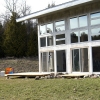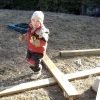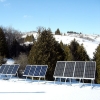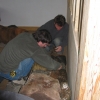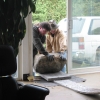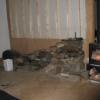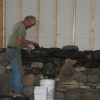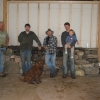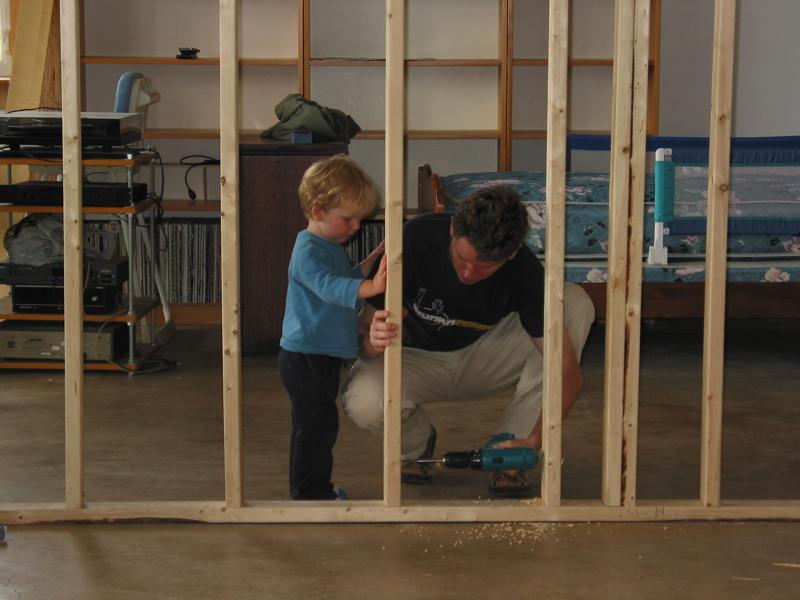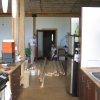The Driveway
Most people when they come to visit remark upon the length of our driveway. Because the front 30 acres of our land is part of the Oak Ridges Moraine we couldn’t build the house anywhere near the road. As a result the house is near the centre of the land and our driveway is nearly a kilometre long. The quality of the road varies seasonally: muddy and wet during the spring, dry and dusty during the summer, rough in the fall and not surprisingly, slippery in the winter.
Our driveway is plowed in the winter rather than blown. Now here in the country the snowblower vs. plow debate can be nearly religious in its tone and fervour but I personally prefer plowing because it builds up big drifts at the side of the fields which can act like crude snow fences. Our neighbour has a driveway nearly as long as ours and a snowblower and he has constant problems with the snow blowing right back over his lane within days of blowing it clear. The drawback to plowing is that in years with heavy snowfalls the driveway can get progressively narrower as you run out of room to put the snow. We’ve already had problems up where we park the cars where the piles are encroaching on our parking spaces. We pay about $300 a year for plowing for an average of twelve visits. This year we’re already at six so I’m expecting the bill will be higher.
The big problem this year is the ice. We’ve had ice storms before but the ice usually only lasts a day or two and melts or is covered by snow. Our driveway has been covered by ice for it’s whole length for several weeks now. The ice is so thick and so complete that I’ve been tempted to strap on my skates and try and skate the whole thing. The ice is causing us big problems with cars as you can well imagine. We park on a slope and on several occassions we haven’t been able to negotiate the hill. Backing down the hill is… exciting. Joanne has stuck her car in snowbanks twice - once so bad that I had to winch it out - I buried the truck so thoroughly that it looked like I had parallel parked it into a snowbank and my parents spent the better part of an hour trapped in the driveway on Christmas day. We can’t leave the cars at the bottom of the hill because there isn’t enough room to turn them around down there. So every day I go out with the ash tray and spread out the meagre ashes from the wood stove. We can’t get back to the pit and I’m loathe to spend the money on sanding (and I can’t get back to my pit) so we’ll just wait and hope that we get some snow soon.


